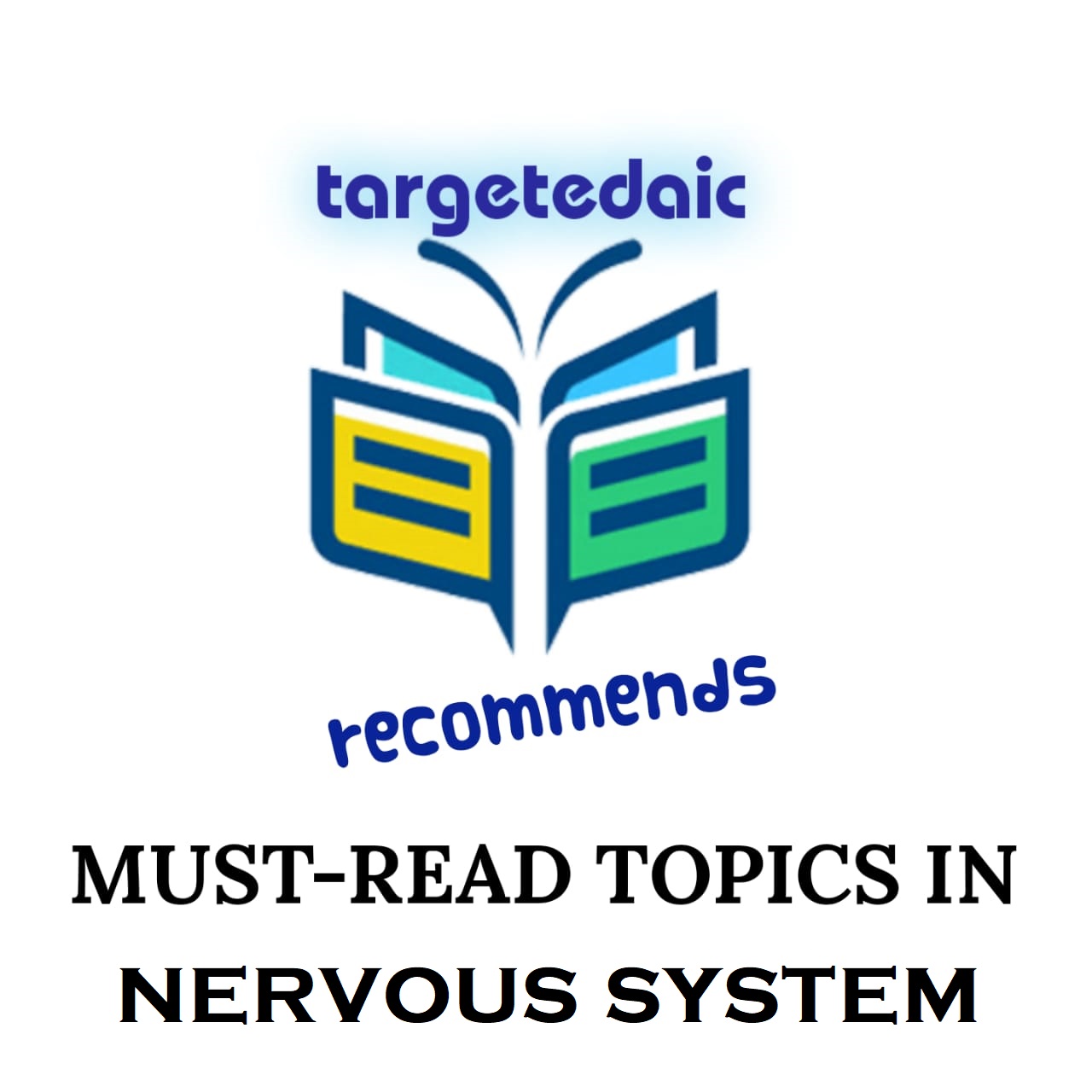The nervous system is one of the most important topics that must be mastered for successful exam preparation. However, the topis are so extensive and exhausting that most of the students will find themselves submerged in the confusing void of what to read from the plethora of resources available out there.
To make the tough terrain a little less painful, we have tried to complete a list of the most important topics to be read under the nervous system, a bare minimum yet essential topics’ compilation.
A must go-through guide before you start prepping up for the neurology/ CNS section?
Physiology and physics
- CSF formation and drainage.
- ICP, Monro-kelli doctrine. Graph
- ICP (intracranial pressure): monitoring, normal value and how to decrease, neuraxial with increased ICP:
- Glasgow coma scale, ICP- how to measure it and when, how to keep in under control, ATLS guidelines
- Causes and management of increased ICP
- Circle of Willis
- PCO2 and O2 effect on CBF with diagrams
- Cerebral blood flow and brain protection.
- Cerebral autoregulation curve.
- Measurement of cerebral blood flow. Different methods, physics
- Measurement of cerebral oxygen consumption, cerebral function during surgery
- Jugular bulb saturation. Significance.
- Neural messengers
- All about neuromuscular junction
- Brain death diagnosis
- Cerebroptrotective stratergies.
Clnical questions:
- CT scan brain with SDH/ EDH/ ICH/ midline shift are the most commonly asked spots. The viva eventually focuses on the disease (↑ICP) and its management.
- TBI in detail. Assessment of severity, indications of CT scan, indications of intubation and transfer to specialized neurosurgical unit.
- Management of head trauma, ATLS guidelines
- ICP management, TBI goals.
- Carotid endarterectomy (preoperative assessment, types of anaesthesia, postoperative complications and how to monitor cerebral function)
- Parkinsonism
- Post-spinal surgery complications
- Failed spine surgery syndrome
- Brain death
- Patient with SDH/ EDH/ ICH. Differences in presentation and management.
- Spinal shock, management and complications
- May ask about autonomic nervous system. Sympathetic and parasympathetic outflow. Effects of stimulation and blockade.
Case scenario examples:
- A 37 Y old, 35-week pregnant female gives history of repeated attacks of severe headache. Her brain CT shows a big frontal meningioma with signs of high ICP (midline shift). Her blood pressure is 170/110 with HR of 45/min. what would be your plan for her management?
- Blood supply to the brain: the circle of Willis, Draw, explain why it’s a circle then went into CEA and how to avoid brain ischemia (monitoring, the use of shunt,) which type of anesthesia . . . stellate ganglion block . . . its complications . . . complications of Local Anesthetics.
- You are called in to assess a 6-year-old child with TBI and GCS of 4. Your management, discuss elevated ICP and its management. How do u assess GCS in the child? Do you know the protocol for diagnosis of brain stem death?
- A 78-year-old man with neurofibromatosis and COPD presents for resection of a occipital lobe SOL that is causing neurological symptoms? How will you assess the urgency of surgery? Your approach for preoperative optimization and intraoperative conduct of surgery? What are the likely complications that may be encountered during the surgery? How would you prone this patient and what are the adverse effects of prone positioning?
- List the nuclei of the vagus nerve, and describe the immediate relations of the right vagus nerve in the neck at C6 and thorax at T4. Name the branches of the vagus nerve. Can u tell us about a few clinical situations that may produce vagal reflex induced bradycardia?
- A 40-year-old patient has been successfully resuscitated post cardiac arrest following acute MI. Can hypothermia be induced in this patient for cerebroprotection? How can a patient be cooled in these circumstances? What are the cerebral physiological benefits of induced hypothermia following successful resuscitation from cardiac arrest? What adverse effects may occur due to the use of induced hypothermia? Are you aware for any other non-surgical clinical scenarios may the use of induced hypothermia be beneficial?
- What characteristic neurological changes occur immediately and in the first three months following transection of the spinal cord at the fourth thoracic vertebra? What other clinical problems may develop following this type of injury? List the advantages of a regional Anaesthetic technique for cystoscopy in this patient. Why and when may suxamethonium be contraindicated in a patient with spinal injury?
FOR MUST READ TOPICS IN RESPIRATORY SYSTEM CLICK HERE.
You can also join our Facebook group to stay updated with our content.
-
 Radiology for the Anaesthetist₹1500.00
Radiology for the Anaesthetist₹1500.00


